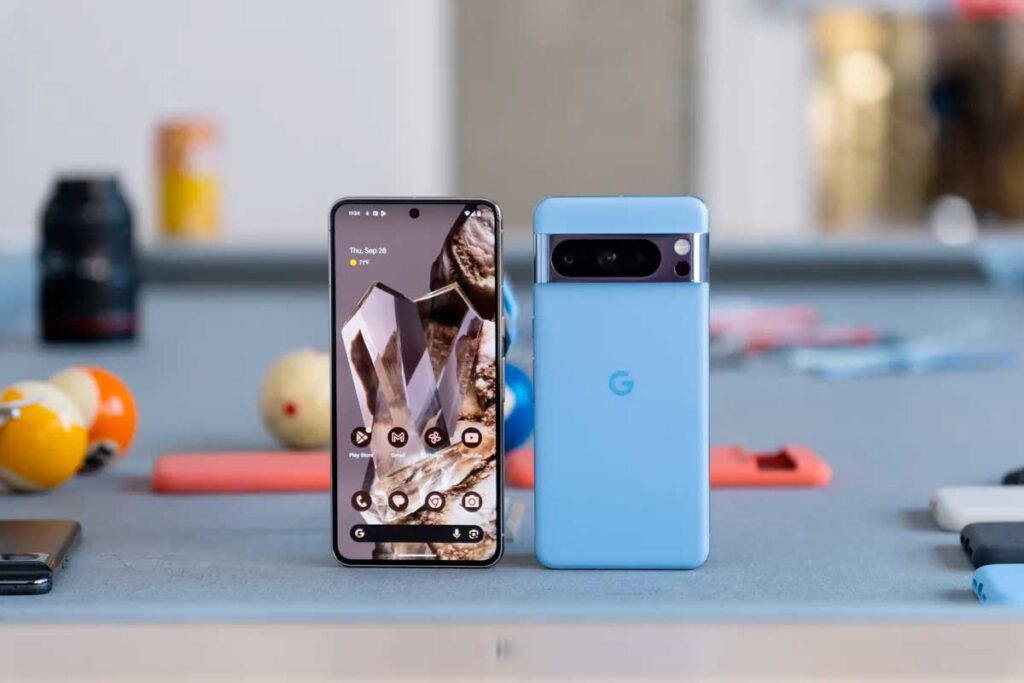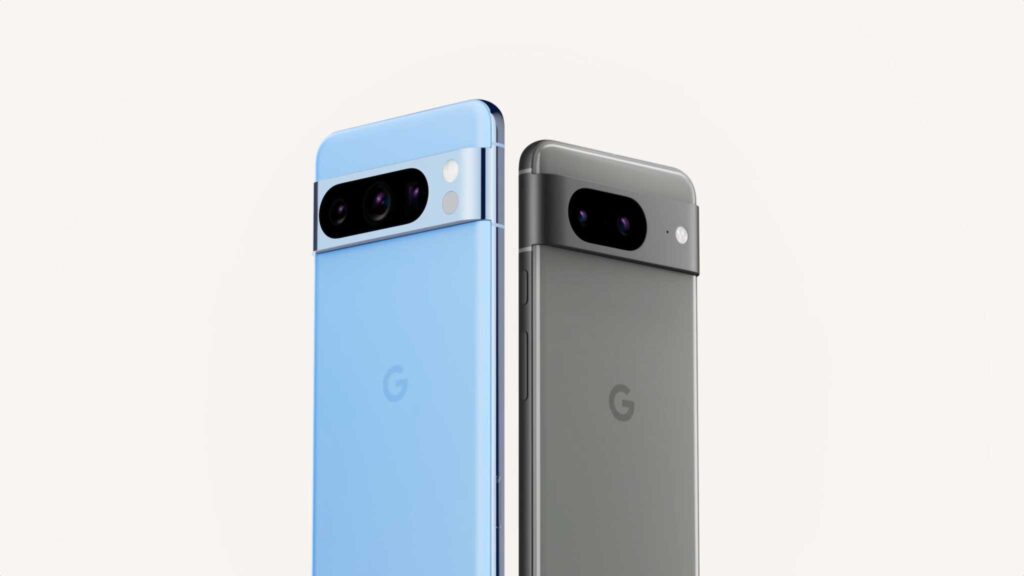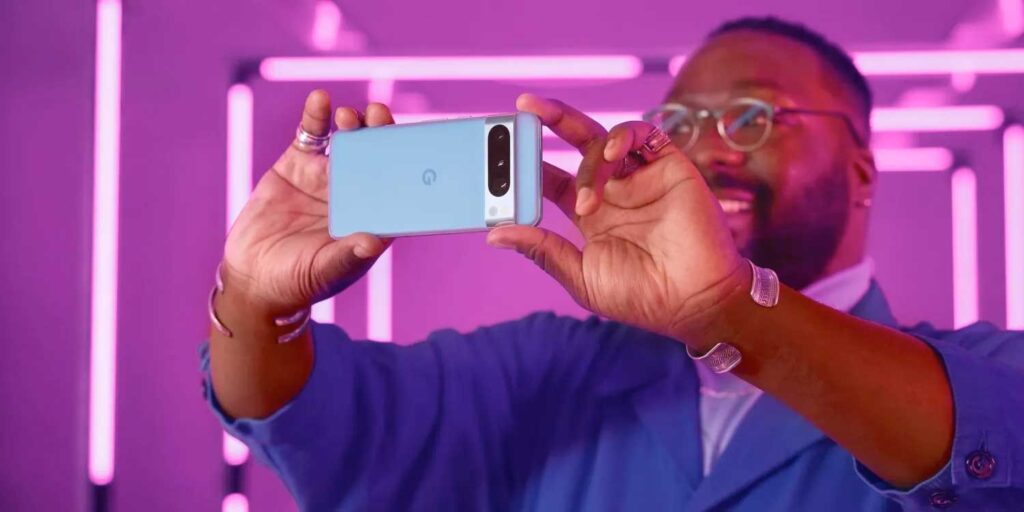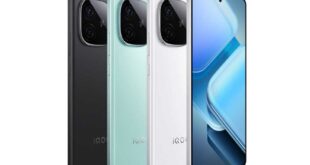Google’s latest releases, the Pixel 8 and Pixel 8 Pro, showcase Google’s meticulous attention to design, focusing on subtle enhancements for a superior tactile experience. Despite the focus on aesthetics, both devices retain the quintessential Pixel phone characteristics, ensuring seamless integration from the operating system to the camera.

Google proudly asserts that these smartphones place the most advanced AI capabilities directly into users’ hands. Equipped with the Tensor G3 platform, both the devices promise unparalleled AI capabilities. Google has also committed to providing an impressive 7 years of operating system upgrades for the Pixel 8 series, albeit with a modest price increase of $100. The Pixel 8 Pro starts at $999.
Design
Both Pixel phones boast a shift to matte glass backs and glossy metal frames, with a rich array of colors. Notably, Google’s commitment to environmental sustainability is evident; 100% of the aluminum used in the duo is recycled. Even the packaging aligns with eco-conscious efforts, constructed from recycled paper materials. Repairability is also a focal point, allowing users to replace components easily.
While the screen sizes remain consistent with the previous generation (6.2-inch for Pixel 8 and 6.7-inch for Pixel 8 Pro), the notable change is the absence of curved screens. The flat screens and slightly curved screen edges contribute to a more aesthetically pleasing design. Google has also addressed asymmetry in screen borders, rectifying a previous concern.

Moreover, the series introduces a variable refresh rate feature, ranging from 60Hz-120Hz on Pixel 8 and 1-120Hz on Pixel 8 Pro. These enhancements, coupled with peak brightness levels of 2000 nits for Pixel 8 and 2400 nits for Pixel 8 Pro, are showcased under the banner of the ‘Super Actua Display.’
A noteworthy addition is the temperature sensor, allowing users to measure the environment’s temperature directly on the phone. This sensor’s potential application extends to scanning objects, receiving FDA approval for body temperature sensing.
Tensor G3
Google’s dedication to AI is evident in the Tensor G3 platform, emphasizing enhanced user experiences. While specific details regarding the CPU, GPU, and TPU architecture remain undisclosed, Google has highlighted that the Pixel 8’s machine learning processing capabilities are twice as fast as the Pixel 6.
Camera

The Pixel 8 and Pixel 8 Pro cameras feature a 50MP main lens with improved brightness, alongside ultra-wide and telephoto lenses. Notable advancements include AI-driven noise reduction in video recordings and a feature allowing the selection of the best face from a series of photos. Google has also introduced Video Boost, enhancing video recording capabilities through HDR processing and improved color saturation and detail.
Google Assistant with Bard
Google Assistant integrates Bard’s intelligent features, enhancing natural speech recognition and translation capabilities. Additionally, the Gboard for Pixel incorporates AI-driven options for correcting spelling and grammar errors.
Operating System and Updates
The users are assured 7 years of operating system updates, providing seamless integration with Android 14, launched simultaneously. This longevity ensures access to Google’s latest AI technologies and vision.
Charging Capacity
Both Pixel phones support a maximum charging capacity of 30W. The Pixel 8 houses a 4575mAh battery, while the Pixel 8 Pro boasts a 5050mAh battery.
Google Pixel 8 and Pixel 8 Pro price and release date
- The Pixel 8 is available for pre-order starting at $699 / £699 on Amazon.com / Amazon.co.uk, inclusive of Free Pixel Buds Pro.
- Simultaneously, the Pixel 8 Pro, starting at $999 / £999, can be pre-ordered on Amazon.com / Amazon.co.uk, bundled with a Free Pixel Watch 2.
Both Google devices will be released on October 12, 2023.
No products found.
No products found.
No products found.
No products found.
No products found.
 Technology News, Reviews and Buying Guides review, monitor review, tablet review, laptop review, mobile review, smartphone review, buying guide,
Technology News, Reviews and Buying Guides review, monitor review, tablet review, laptop review, mobile review, smartphone review, buying guide,


